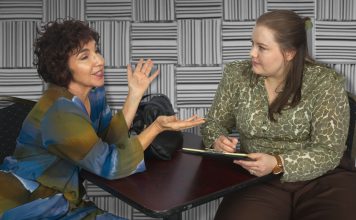These are sometimes called the
”
lazy days of summer,
”
a time of less pressure and more opportunities for leisure
activities.
In recognition of this tradition, here are two recommendations
for your consideration.
These are sometimes called the “lazy days of summer,” a time of less pressure and more opportunities for leisure activities.
In recognition of this tradition, here are two recommendations for your consideration.
Mary Magdalene, the supposed prostitute who figures prominently in the Gospels, has been much in the news lately, particularly because of the best-selling novel “The DaVinci Code.”
Her name was given to a chain of asylums operated by Roman Catholic religious orders in Ireland and other countries during the period from the 1800’s through the 1960’s.
“The Magdalene Sisters,” released to theaters last summer after winning the Golden Lion Award at the Venice Film Festival, is a fictional account (but based on fact) of these asylums which took in 30,000 so-called “fallen women” who were compelled to accept a policy of celibacy and piety while receiving intensive instruction on the nature of sexuality and vanity.
Set in 1964 near Dublin, the movie quickly introduces its three main characters and shows their fall from “respectability:”
• Margaret’s male cousin rapes her at a family wedding; when she tells her family, she is sent away to the asylum.
• Rose gives birth to a son, and her family quickly banishes her to the Magdalene.
• Sixteen-year-old Bernadette is starting to show signs of female sexuality; she is sent away from the orphanage where she grew up to the stricter institution.
As penance for what were considered their sins, the women in the asylums were forced into a 24-hour regime of work, prayer and sleep, with no contact allowed with the outside world, and a heavy dose of physical and mental cruelty.
These repressive institutions were finally disbanded in the 1990’s because of the widespread use of automatic washers which made the church-run laundries no longer profitable.
This remarkable film, available on video or DVD, suggests the consequences of all forms of religious oppression. The DVD version contains a black-and-white television documentary, “Sex in a Cold Climate,” which was the impetus for Peter Mullan’s motion picture.
Although summer is traditionally the time for “page-turning” fiction at the beach, backyard or local park, “The Saints’ Guide to Happiness” (North Point Press, 2003) offers the reader some insight into a form of happiness not often portrayed in modern novels.
Robert Ellsberg presents a series of lessons from “saints,” historical figures like Augustine, Francis of Assisi and Teresa of Avila; moderns like Dorothy Day, Flannery O’Connor and Henri J. Nouwen.
He says of these saints: “In the end they were not called saints because of the way they died … or their visions or wondrous deeds, but because of their extraordinary capacity for love and goodness, which reminded others of the love of God.”
Human nature causes us to seek happiness and avoid pain, but in chapter seven Ellsberg points out: “We have limited control over the circumstances of our lives. But we have the power in every circumstance to shape our attitudes. Thus, while we can be miserable in the midst of comfort and luxury, it is equally possible – as the saints are witnesses – to be happy in the midst of suffering.”
Easy to say – difficult to do. But this short book has numerous examples which help readers recognize ways to increase happiness if they will be intentional about it.













